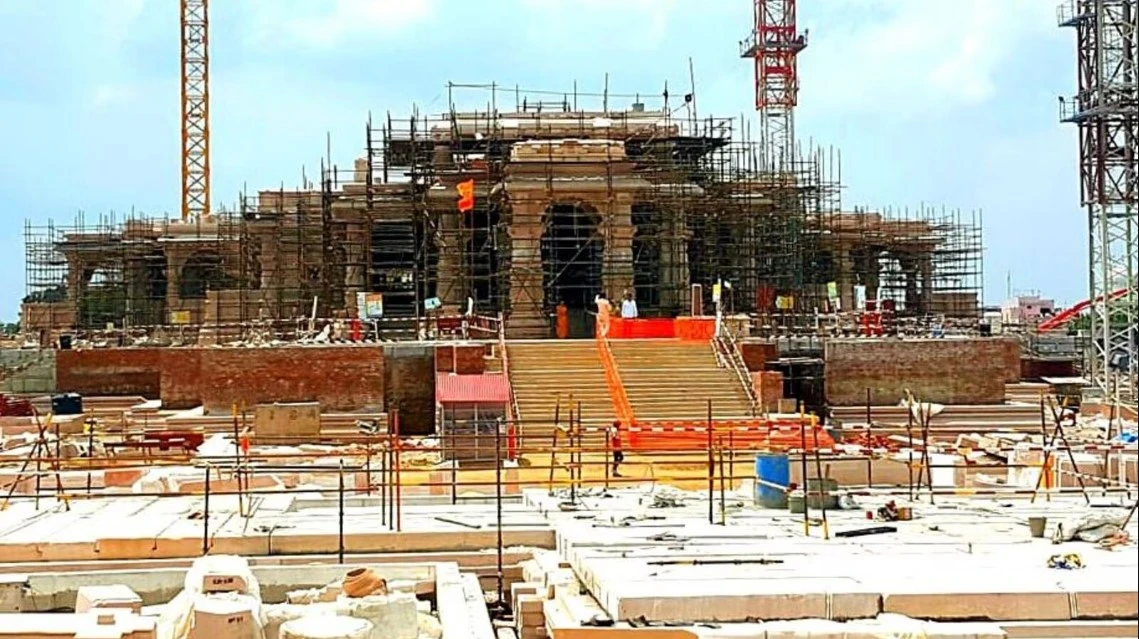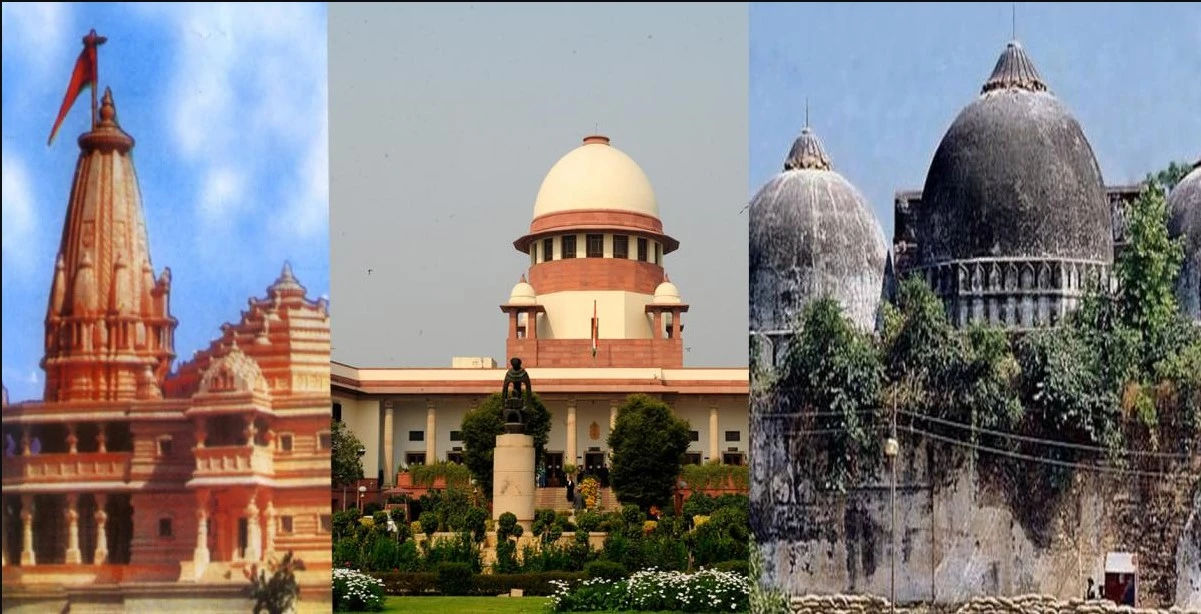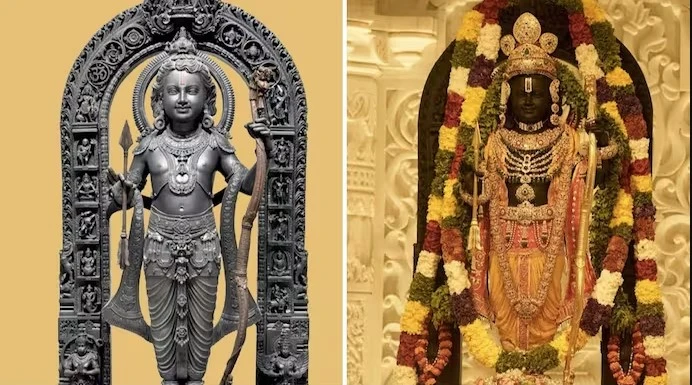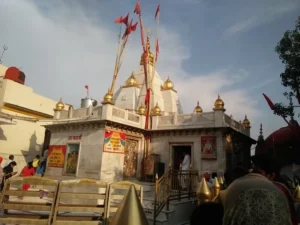Ayodhya, a city situated near the banks of the sacred Saryu River in the Indian state of Uttar Pradesh, holds historical and religious significance. The Ayodhya Ram Mandir Live, a Hindu temple located in this city, is believed to be situated at the Ram Janmabhoomi, the birthplace of Lord Rama. The grand opening ceremony for the Ayodhya Ram temple is scheduled for January 24, 2024, and it is recognized as the world’s third-largest Hindu shrine.
Every year, as Diwali illuminates streets and homes with lamps, people across India joyously celebrate the symbolic homecoming of Lord Rama. A revered deity in Hinduism. This occasion commemorates Lord Rama’s return to Ayodhya after a 14-year exile and his triumph over the demon king, Ravana. The history of the Ayodhya Ram Mandir is deeply intertwined with India’s rich cultural and religious heritage.
History of the Ayodhya Ram Mandir

The roots of the Ayodhya Ram Mandir trace back to the ancient Hindu epic, Ramayana, designating Ayodhya as the birthplace of Lord Rama. However, the site witnessed the construction and destruction of various structures throughout centuries. In the 16th century, Mughal Emperor Babur, as part of his temple raids in northern India, attacked and demolished the ancient temple, including the Janmasthan temple on the site. Subsequently, the Mughals erect the Babri Masjid mosque on the same location, which is believ to be the Ram Janmabhoomi, the birthplace of Lord Rama.
Babri Masjid was demolished
In 1992 when a substantial gathering of armed Hindu nationalists breached barricades surrounding the mosque in Ayodhya. This destructive act triggered communal riots across the country. The Babri Masjid, a 16th-century mosque built in Ayodhya during the Mughal rule in India, held historical significance. The demolition of the Babri Masjid stands as a notable and controversial event in Indian history, ultimately shaping the legal disputes and the subsequent construction of the Ayodhya Ram Mandir.
Key Facts about Ram Mandir
| Chief Architect | Chandrakant B. Sompura (CBS) |
| Construction Company | Larsen and Toubro (L&T) |
| Project Management Company | Tata Consulting Engineers Limited (TCEL) |
| Design Advisors | IIT Chennai, IIT Bombay, IIT Guwahati, CBRI Roorkee, SVNIT Surat, NGRI Hyderabad |
| Sculptors | Arun Yogiraaj (Mysore), Ganesh Bhatt, Satyanarayan Pandey |
| Total Area | 70 Acre (70% green Area) |
| Temple Area | 2.77 Acre |
| Temple Dimensions | – Length: 380 Ft. – Width: 250 Ft. – Height: 161 Ft. |
| Construction Style | Indian Nagar Style |
| Special Features | – 2 Sewer Treatment Plants – 1 Water Treatment Plant – Dedicated Power Supply |
Ayodhya Ram Mandir Dispute
In the latter part of the 20th century, the Babri Masjid, situated at the contested site, became a focal point of tensions between the Hindu and Muslim communities. Critics argue that the current location of Ayodhya might have originally been a Buddhist site, drawing parallels to Saketa as described in Buddhist texts. In 1853, armed Hindu ascetics from the Nirmohi Akhara took control of the Babri Masjid site. Asserting ownership and prompting intervention by the civil administration.
In 1855, the civil administration divided the mosque premises, allocating separate areas for Muslims and Hindus. In 1883, Hindus initiated efforts to construct a temple on the platform. When denied permission by the administration, they pursued legal avenues, but the court dismissed the case. In December 1949, after placing idols of Rama and Sita in the mosque, Hindus claimed a miraculous appearance. Subsequently, thousands of Hindu devotees began visiting the site, leading the government to declare the mosque a disputed area and lock its gates. The legal battle over land ownership persisted for years. Finally, in 2019, a landmark Supreme Court judgment granted the site to Hindus for the construction of the Ram Mandir.
Construction of the Ayodhya Ram Mandir

After the Supreme Court’s verdict, the construction of the Ayodhya Ram Mandir began at a rapid pace. The land was allocat to the Ram Mandir Trust, empowering the Government of India to oversee the establishment of the Ayodhya Ram temple. The government earmarked the necessary budget for the construction, with a total land allocation of 70 acres that includes several temples dedicated to deities such as Lord Shiva and Lord Ganesha.
The Ayodhya Ram Mandir construction kick off shortly after the groundbreaking ceremony, and the foundation stone was laid on August 5, 2020. The architectural design reflects deep roots in Hindu tradition, incorporating a unique inscription, “Jai Shree Ram,” in the temple’s construction. The Larsen & Toubro group is task with building the Ayodhya Ram temple, with an estimat cost of Rs 18,000 crore. The construction project has garnered widespread support from people across India and the world, with contributions pouring in from devotees and well-wishers.
Design of the Ram Mandir in Ayodhya
The Ayodhya Ram Mandir is designed by the chief architect, Chandrakant Sompura, hailing from Ahmedabad, with assistance from his two sons, Nikhil Sompura and Ashish Sompura. In 2020, the Sompura family prepared a new design, incorporating changes from the original, aligning with Hindu texts, Vastu Shastra, and Shilpa Shastras.

Strategically located on the banks of the sacred Sarayu River, the Ayodhya Ram Mandir sits at the heart of Ayodhya. The main temple complex, spanning 2.7 acres, will house the sacred idol of Lord Rama. The construction of the Ayodhya Ram Mandir takes place on a raised platform across three levels. Adhering to the principles of Vastu Shastra and Shilpa Shastras, ancient Indian architectural sciences. The temple boasts impressive dimensions, measuring 235 feet wide, 360 feet long, and 161 feet high. Supported by 360 pillars, each contributing to its structural integrity and visual grandeur, the Ayodhya Ram Mandir is constructed in the Gujarat-Chaulukya religious architectural style of Northern India.
Fifteen prominent characteristics of the Ayodhya Ram Mandir.
- The central sanctum of the Shri Ram Mandir houses the idol of Shri Ram Lalla. Symbolizing the infant form of Lord Shri Rama.
- The first floor houses the Shri Ram Darbar.
- The temple is design with 5 Mandapas: Nritya Mandapa, Rang Mandapa, Sabha Mandapa, Prarthana Mandapa, and Kirtan Mandapa.
- Four temples dedicated to Suryadev, Mother Bhagwati, Lord Ganesha, and Lord Shiva will adorn the corners of the periphery (Parikota).
- In the northern arm, there will be a temple dedicat to Goddess Annapurna, and in the southern arm. A temple honoring Lord Hanuman will be erect.
- Other temples within the complex will pay homage to revered figures like Maharishi Valmiki, Maharishi Vashishta, Maharishi Vishwamitra, Maharishi Agastya, King Nishad, Mata Shabari, and Devi Ahilya.
- The temple premises will include the Sita Kup.
- With meticulous planning, the temple features 44 gates; 18 boast intricately crafted doors. And 14 are adorn with gold, symbolising its sacred significance. The temple can be access through three distinct paths: Ram Janmabhoomi, Bhakti, and Ram.
- Renovation plans for the ancient temple of Lord Shiva on the Navratna Kubera Hill in the southwest. Along with the installation of a Jatayu statue.
- Shri Ram Mandir, besides serving as a symbol of religious faith, stands out as an impressive architectural masterpiece.
- It reflects India’s spiritual heritage and the enduring legacy of Lord Rama. Contributing to Ayodhya’s status as the spiritual capital of India.
The initial unveiling of the idol of Lord Rama showcased

The long-anticipat moment has finally arriv – the first glimpse of Lord Rama’s idol has been unveil. This marks a unique and sacred occasion, allowing everyone to witness. The divine image of Lord Rama for the very first time. People, whether devot or simply curiou, are overcome with awe and reverence as they partake in this moment event. The unveiling holds great significance, uniting everyone in celebration and serving. As a poignant reminder of the profound cultural and religious importance Lord Rama holds in our hearts.
Also Read : ipl 2024 match schedule
Conclusion
A journey to the Ayodhya Ram Mandir serves as a pilgrimage to the core of India for many. It extends its welcome not only to the devoted but also to the inquisitive, historians, and seekers. The Ayodhya Ram Mandir holds the promise of igniting Ayodhya’s economic resurgence. Additionally, the presence of the Ram Temple in Ayodhya may likely inspire. The preservation of other historical and cultural structures in and around the city.




